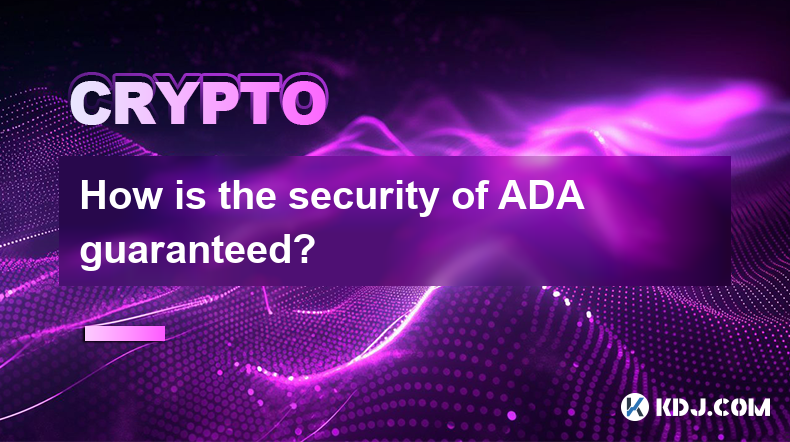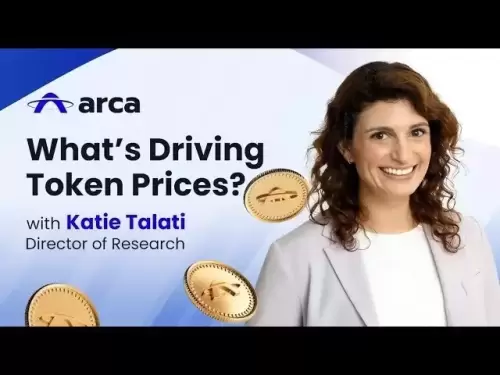-
 Bitcoin
Bitcoin $107,275.1551
-0.32% -
 Ethereum
Ethereum $2,485.3056
1.77% -
 Tether USDt
Tether USDt $1.0005
0.03% -
 XRP
XRP $2.2223
1.31% -
 BNB
BNB $657.7608
1.39% -
 Solana
Solana $156.3566
3.02% -
 USDC
USDC $0.9999
0.01% -
 TRON
TRON $0.2791
1.09% -
 Dogecoin
Dogecoin $0.1651
0.45% -
 Cardano
Cardano $0.5738
2.78% -
 Hyperliquid
Hyperliquid $40.2672
5.82% -
 Bitcoin Cash
Bitcoin Cash $517.5487
5.30% -
 Sui
Sui $2.7981
-0.40% -
 Chainlink
Chainlink $13.3500
-0.36% -
 UNUS SED LEO
UNUS SED LEO $9.1220
1.12% -
 Avalanche
Avalanche $17.9515
-0.32% -
 Stellar
Stellar $0.2361
-0.44% -
 Toncoin
Toncoin $2.9423
2.33% -
 Shiba Inu
Shiba Inu $0.0...01145
-0.68% -
 Litecoin
Litecoin $86.1693
-0.63% -
 Hedera
Hedera $0.1493
0.64% -
 Monero
Monero $315.1374
1.81% -
 Polkadot
Polkadot $3.4002
-0.73% -
 Dai
Dai $1.0001
0.03% -
 Bitget Token
Bitget Token $4.5413
-1.35% -
 Ethena USDe
Ethena USDe $1.0002
-0.01% -
 Uniswap
Uniswap $7.1733
-0.57% -
 Aave
Aave $274.0465
-0.23% -
 Pepe
Pepe $0.0...09810
2.24% -
 Pi
Pi $0.5101
-3.10%
How is the security of ADA guaranteed?
Cardano's ADA security relies on Ouroboros PoS, a multi-layered approach including peer-to-peer architecture, regular security audits, the Cardano Foundation's oversight, and user responsibility for private key protection.
Mar 14, 2025 at 02:45 am

Key Points:
- Cardano's security relies on a multi-layered approach, combining cryptographic algorithms, peer-to-peer network architecture, and a robust community of validators.
- The Ouroboros proof-of-stake (PoS) consensus mechanism is central to ADA's security, offering improved energy efficiency and enhanced security compared to proof-of-work systems.
- Regular security audits and updates to the Cardano codebase are crucial in mitigating potential vulnerabilities and ensuring ongoing protection.
- The Cardano Foundation plays a vital role in overseeing the network's security and fostering a secure ecosystem.
- User responsibility in safeguarding their private keys and employing secure wallet practices is paramount.
How is the Security of ADA Guaranteed?
Cardano's security isn't reliant on a single element but a multifaceted strategy designed to protect the ADA cryptocurrency and its network. This robust approach involves various layers, ensuring the integrity and stability of the entire system. Understanding these layers is crucial for grasping the overall security posture of ADA.
One cornerstone of ADA's security is its underlying consensus mechanism: Ouroboros. Unlike Bitcoin's energy-intensive proof-of-work (PoW), Ouroboros is a proof-of-stake (PoS) algorithm. This means that instead of miners competing to solve complex mathematical problems, validators are selected to create new blocks based on the amount of ADA they stake. This significantly reduces energy consumption and improves network security.
The decentralized nature of the Cardano network is another crucial factor in its security. The network operates on a peer-to-peer (P2P) basis, meaning there's no single point of failure. Transactions are validated and confirmed by numerous nodes distributed globally, making it extremely difficult for any single entity to compromise the entire network.
Regular security audits are a vital part of maintaining Cardano's security. Independent security firms regularly scrutinize the Cardano codebase, identifying and reporting potential vulnerabilities. These audits help ensure that the network is constantly improving its defenses against emerging threats. Swift responses to identified vulnerabilities and subsequent code updates are essential to maintain a strong security posture.
The Cardano Foundation plays a significant role in ensuring the security and long-term sustainability of the ADA ecosystem. The Foundation oversees the development and maintenance of the Cardano network, actively working to improve its security and stability. They facilitate research, development, and collaboration within the Cardano community, fostering a robust and secure environment.
The security of your individual ADA holdings rests heavily on your own practices. This includes using secure wallets and keeping your private keys safe. Never share your private keys with anyone, and be wary of phishing attempts and malicious software.
Understanding the Ouroboros Protocol
Ouroboros is a groundbreaking PoS algorithm specifically designed for Cardano. Its security is built upon several key features.
- Random Slot Leader Selection: Validators are chosen randomly to create blocks, preventing any single entity from gaining undue influence over the network.
- Formal Verification: The Ouroboros protocol has undergone rigorous mathematical verification, proving its security properties. This rigorous approach ensures a high level of confidence in the protocol's reliability.
- Slot-Based Architecture: The network operates in defined time slots, ensuring predictable block creation and network stability.
The Role of Community and Transparency
The Cardano community plays a vital role in the network's security. A large and active community of developers, researchers, and users helps to identify and report vulnerabilities. The open-source nature of the Cardano codebase allows for community scrutiny and independent verification, fostering transparency and trust. This collaborative approach contributes significantly to the overall security of the ADA network.
Security Best Practices for ADA Holders
To maximize the security of your ADA holdings, follow these essential steps:
- Use a reputable hardware wallet: Hardware wallets provide a significantly higher level of security compared to software wallets.
- Keep your private keys secure: Never share your private keys with anyone, and store them in a safe and secure location.
- Be wary of phishing attempts: Be cautious of suspicious emails, websites, and messages that ask for your private keys or other sensitive information.
- Keep your software updated: Ensure that your wallet software and operating system are always up-to-date with the latest security patches.
- Use strong passwords: Choose strong, unique passwords for all your accounts, and use a password manager to help you manage them.
Frequently Asked Questions:
Q: Is ADA as secure as Bitcoin?
A: Both ADA and Bitcoin employ different approaches to security. Bitcoin relies on PoW, while ADA uses PoS. Each has its strengths and weaknesses. While direct comparison is difficult, Cardano's rigorous approach to security audits and formal verification contributes to a high level of confidence in its security.
Q: What happens if a vulnerability is discovered in the Cardano code?
A: The Cardano Foundation and the wider community work collaboratively to address vulnerabilities. Security audits regularly identify potential issues, and developers work swiftly to release patches and updates. Transparency in the process is crucial.
Q: How can I protect my ADA from theft?
A: Employing best practices, such as using a hardware wallet, strong passwords, and avoiding phishing scams are essential. Regularly backing up your wallet and diversifying your holdings can further enhance security.
Q: Is the Cardano network susceptible to 51% attacks?
A: The high level of decentralization in Cardano makes a 51% attack extremely difficult. The PoS mechanism and the large number of validators significantly increase the resources required for such an attack, making it highly improbable.
Q: What role does the Cardano Foundation play in ensuring ADA's security?
A: The Cardano Foundation is instrumental in overseeing the network's security, fostering research, development, and collaboration within the community to identify and address potential threats. They also promote best practices and support security audits.
Disclaimer:info@kdj.com
The information provided is not trading advice. kdj.com does not assume any responsibility for any investments made based on the information provided in this article. Cryptocurrencies are highly volatile and it is highly recommended that you invest with caution after thorough research!
If you believe that the content used on this website infringes your copyright, please contact us immediately (info@kdj.com) and we will delete it promptly.
- Coinbase, Altcoins, and Listings: What's the Buzz?
- 2025-07-01 00:30:11
- Chainlink's Bullish Signals: Investors Bet on Long-Term Value
- 2025-07-01 00:50:12
- CICADA Finance Soars on BNB Chain: A TGE Deep Dive
- 2025-07-01 01:30:11
- MicroStrategy's Bitcoin Bet: Holdings, Sell-Off Concerns, and S&P 500 Dreams
- 2025-07-01 01:30:11
- XRPL EVM Sidechain: Ethereum dApps Unleashed on XRP Ledger!
- 2025-07-01 01:35:11
- Bybit, Kraken, and Tokenized Stocks: A New Era for Trading?
- 2025-07-01 00:30:11
Related knowledge

How to customize USDT TRC20 mining fees? Flexible adjustment tutorial
Jun 13,2025 at 01:42am
Understanding USDT TRC20 Mining FeesMining fees on the TRON (TRC20) network are essential for processing transactions. Unlike Bitcoin or Ethereum, where miners directly validate transactions, TRON uses a delegated proof-of-stake (DPoS) mechanism. However, users still need to pay bandwidth and energy fees, which are collectively referred to as 'mining fe...

USDT TRC20 transaction is stuck? Solution summary
Jun 14,2025 at 11:15pm
Understanding USDT TRC20 TransactionsWhen users mention that a USDT TRC20 transaction is stuck, they typically refer to a situation where the transfer of Tether (USDT) on the TRON blockchain has not been confirmed for an extended period. This issue may arise due to various reasons such as network congestion, insufficient transaction fees, or wallet-rela...

How to cancel USDT TRC20 unconfirmed transactions? Operation guide
Jun 13,2025 at 11:01pm
Understanding USDT TRC20 Unconfirmed TransactionsWhen dealing with USDT TRC20 transactions, it’s crucial to understand what an unconfirmed transaction means. An unconfirmed transaction is one that has been broadcasted to the blockchain network but hasn’t yet been included in a block. This typically occurs due to low transaction fees or network congestio...

How to check USDT TRC20 balance? Introduction to multiple query methods
Jun 21,2025 at 02:42am
Understanding USDT TRC20 and Its ImportanceUSDT (Tether) is one of the most widely used stablecoins in the cryptocurrency market. It exists on multiple blockchain networks, including TRC20, which operates on the Tron (TRX) network. Checking your USDT TRC20 balance accurately is crucial for users who hold or transact with this asset. Whether you're sendi...

What to do if USDT TRC20 transfers are congested? Speed up trading skills
Jun 13,2025 at 09:56am
Understanding USDT TRC20 Transfer CongestionWhen transferring USDT TRC20, users may occasionally experience delays or congestion. This typically occurs due to network overload on the TRON blockchain, which hosts the TRC20 version of Tether. Unlike the ERC20 variant (which runs on Ethereum), TRC20 transactions are generally faster and cheaper, but during...

The relationship between USDT TRC20 and TRON chain: technical background analysis
Jun 12,2025 at 01:28pm
What is USDT TRC20?USDT TRC20 refers to the Tether (USDT) token issued on the TRON blockchain using the TRC-20 standard. Unlike the more commonly known ERC-20 version of USDT (which runs on Ethereum), the TRC-20 variant leverages the TRON network's infrastructure for faster and cheaper transactions. The emergence of this version came as part of Tether’s...

How to customize USDT TRC20 mining fees? Flexible adjustment tutorial
Jun 13,2025 at 01:42am
Understanding USDT TRC20 Mining FeesMining fees on the TRON (TRC20) network are essential for processing transactions. Unlike Bitcoin or Ethereum, where miners directly validate transactions, TRON uses a delegated proof-of-stake (DPoS) mechanism. However, users still need to pay bandwidth and energy fees, which are collectively referred to as 'mining fe...

USDT TRC20 transaction is stuck? Solution summary
Jun 14,2025 at 11:15pm
Understanding USDT TRC20 TransactionsWhen users mention that a USDT TRC20 transaction is stuck, they typically refer to a situation where the transfer of Tether (USDT) on the TRON blockchain has not been confirmed for an extended period. This issue may arise due to various reasons such as network congestion, insufficient transaction fees, or wallet-rela...

How to cancel USDT TRC20 unconfirmed transactions? Operation guide
Jun 13,2025 at 11:01pm
Understanding USDT TRC20 Unconfirmed TransactionsWhen dealing with USDT TRC20 transactions, it’s crucial to understand what an unconfirmed transaction means. An unconfirmed transaction is one that has been broadcasted to the blockchain network but hasn’t yet been included in a block. This typically occurs due to low transaction fees or network congestio...

How to check USDT TRC20 balance? Introduction to multiple query methods
Jun 21,2025 at 02:42am
Understanding USDT TRC20 and Its ImportanceUSDT (Tether) is one of the most widely used stablecoins in the cryptocurrency market. It exists on multiple blockchain networks, including TRC20, which operates on the Tron (TRX) network. Checking your USDT TRC20 balance accurately is crucial for users who hold or transact with this asset. Whether you're sendi...

What to do if USDT TRC20 transfers are congested? Speed up trading skills
Jun 13,2025 at 09:56am
Understanding USDT TRC20 Transfer CongestionWhen transferring USDT TRC20, users may occasionally experience delays or congestion. This typically occurs due to network overload on the TRON blockchain, which hosts the TRC20 version of Tether. Unlike the ERC20 variant (which runs on Ethereum), TRC20 transactions are generally faster and cheaper, but during...

The relationship between USDT TRC20 and TRON chain: technical background analysis
Jun 12,2025 at 01:28pm
What is USDT TRC20?USDT TRC20 refers to the Tether (USDT) token issued on the TRON blockchain using the TRC-20 standard. Unlike the more commonly known ERC-20 version of USDT (which runs on Ethereum), the TRC-20 variant leverages the TRON network's infrastructure for faster and cheaper transactions. The emergence of this version came as part of Tether’s...
See all articles

























































































